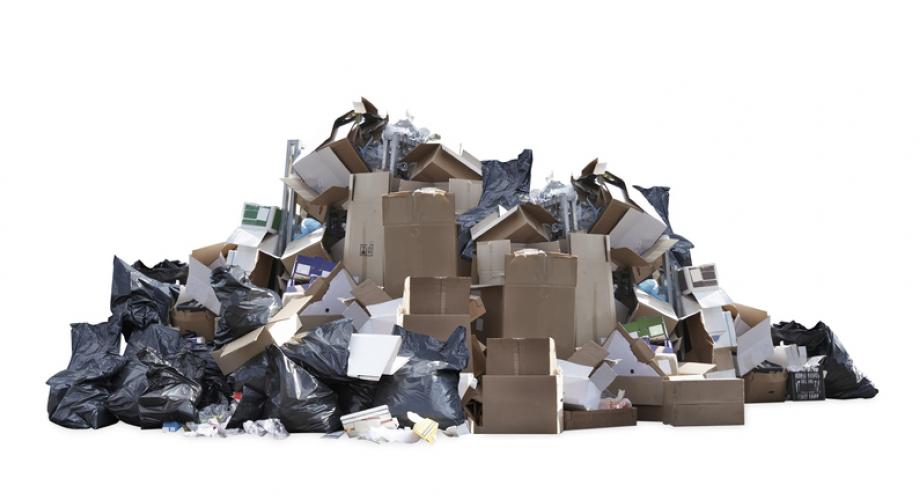Facing an exponential increase in deliveries, the industry attends to an additional challenge: the impact of package waste and the potential for significant fee increases.
By Doug Pike
The increase in online shopping exacerbated by the COVID-19 pandemic leads to a flood of resident packages arriving at multifamily housing communities on a daily basis. One of the often-overlooked byproducts of the e-commerce trend is the amount of waste it is creating.
Led by experts Mary Nitschke, Vice President of Sustainability at RealPage, and Chris Laughman, Senior Account Manager at Bright Power, NAA’s APTvirtual session, “Talking Trash: How to Track and Reduce Package Waste” delved into the impact of package waste and some of the ways the industry is responding to it.
“We have entered into the culture of disposal,” Nitschke said. “It used to be that you kept and held onto things, you put patches on things, you repaired things yourself. Now, everything can just be ordered online. COVID has pushed online shopping. That stuff comes in cardboard boxes, and that’s what’s driving the increase in volume that you have in your waste facilities and waste enclosures at your communities. We’re hearing the phrase ‘new normal.’ What new normal seems to mean for a lot of people is people working from home instead of at the office. When those homes are in our communities, that waste goes up.”
Depending on the market, the impact can be compounded by government regulations that set quotas for material recycling.
“In California, you have to be at 50 percent diversion, and they’re pushing to get multifamily up to 75 percent” Nitschke said. “What happens in California doesn’t stay in California. It bleeds out into other places, as well, and we’re seeing that in other markets where there are ordinances pushed through that require a certain percentage of diversion.”
Most apartment operators probably didn’t plan to think that much about their waste programs, Laughman said.
“The thing about waste is we kind of put it on autopilot,” Laughman said. “It’s something that we set up when we first open the property, then we walk away from it.”
Unfortunately, the surge in incoming package volume has created a flow of outgoing waste that has exceeded the capacity of both the waste containers and waste service contracts at most properties.
“Most of us have signed these contracts that have lots of fine print, which make sure that any overage charges get passed on to the customer,” Laughman said. “Suddenly, we’re seeing properties that may have $1,500 in contamination fees, or $2,000 in overage fees, or a combination of the two. Our actions are causing extra costs for those haulers. All of that gets passed back to the property.”
A significant contributor to overflowing trash and recycling bins is uncollapsed boxes. At least 60% of cardboard that makes it into dumpsters is uncollapsed, Nitschke said, and those boxes have a belly of air that takes up an unnecessary amount of space.
So, how can communities combat the influx of cardboard and the problems it is causing? The best method, Laughman said, is to remove cardboard from the waste stream before it ever gets to the Dumpster. Unfortunately, that typically requires resident cooperation.
The Four Cs
Laughman suggests engaging and educating residents about the proper disposal of their cardboard by using the four Cs: convenience, clarity, capacity and color. Make it as easy as possible for residents to separate and dispose of their packaging waste, and don’t leave any questions about where their cardboard should go. Ensure that the community has the physical space to store diverted cardboard and use color-coded receptacles to help eliminate any confusion.
Other diversion strategies include: Door-to-door waste valet services; reuse opportunities where residents can leave boxes for others to take for packing, etc.; taking advantage of cardboard pick-up services offered by delivery companies in select markets; contracting a sorting service to remove and collapse cardboard from single-stream containers; and deploying AI sensors to alert maintenance to cardboard entering the trash bin.
Unfortunately, most of those solutions come with a price tag. But in certain markets, where the math makes sense based on the price of carboard per ton, properties may even be able to monetize their recycling efforts.
Despite the problems it has caused, there is still money in discarded cardboard.
“Cardboard, from a recycling perspective, is one of the most valuable items in the dumpster, even with the collapse of the commodities market,” Laughman said.
Doug Pike is a freelance contributor to units.
